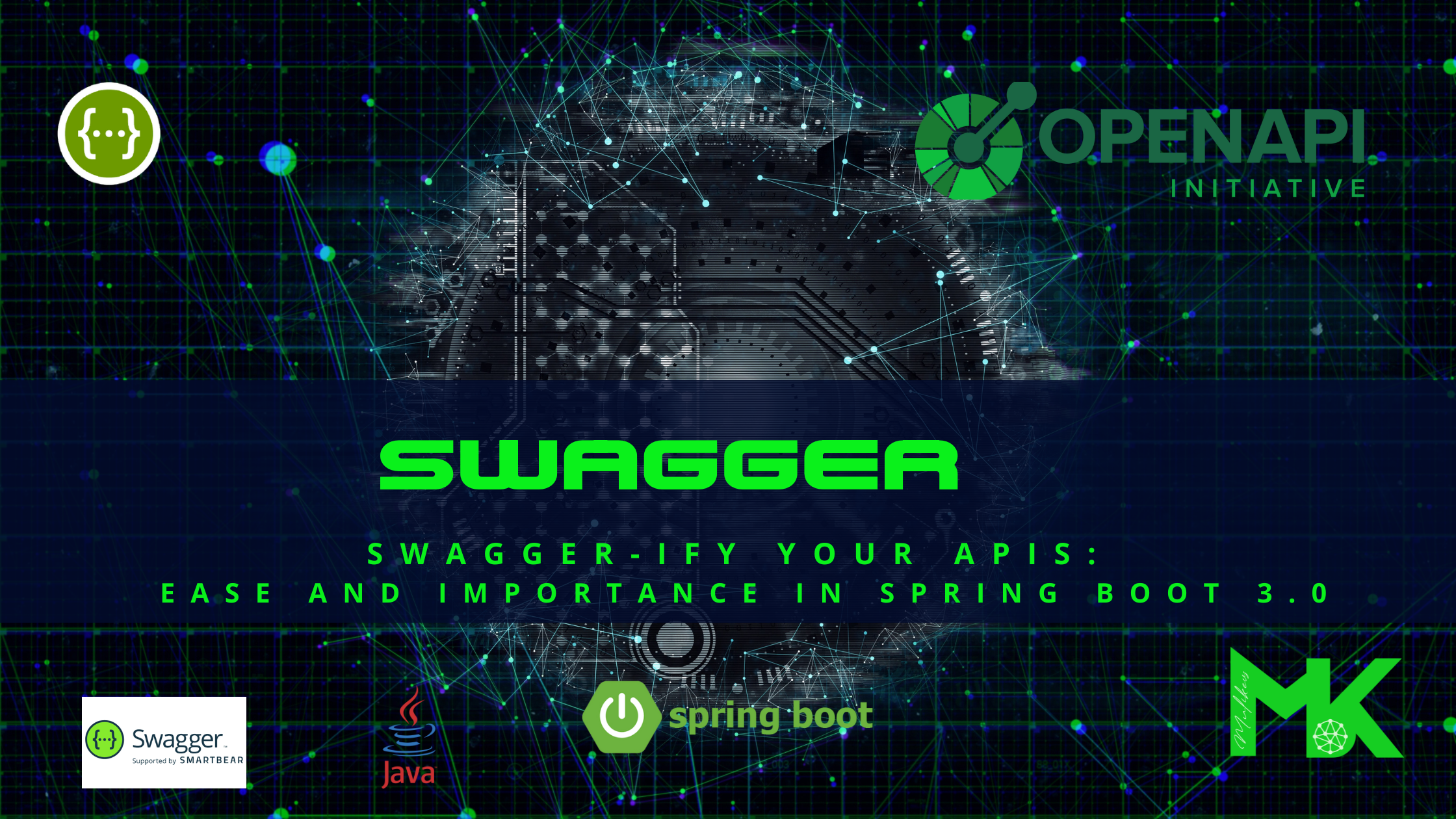Swagger-ify Your APIs: Ease and Importance in Spring Boot 3.0
Swagger, OpenAPI
In the fast-paced world of API development, clear and concise documentation is crucial for smooth collaboration and efficient adoption. Enter Swagger, the rockstar of API documentation tools, making developer lives easier and APIs more discoverable. But how easy is it to integrate Swagger into your Spring Boot 3.0 project? Spoiler alert: very easy! So, buckle up as we explore the magic of Swagger in Spring Boot 3.0.
Why Swaggerize?
Think of Swagger as your API's personal tour guide. It provides an interactive interface where developers can explore endpoints, understand request parameters and responses, and even test the API directly. This translates to faster onboarding, fewer integration headaches, and happier consumers (developers, that is!).
Here's why you should seriously consider Swaggerizing your Spring Boot 3.0 API:
- Effortless Documentation: Forget writing hefty docs – Swagger automatically generates beautiful documentation based on your code annotations.
- Interactive Exploration: Developers can test endpoints directly from the Swagger UI, speeding up their understanding and integration.
- Improved Collaboration: Clear and consistent documentation fosters better communication and teamwork between developers and API consumers.
- Standardization: Swagger uses the OpenAPI Specification, ensuring your API adheres to industry standards and is easily understood by various tools.
Swagger in Spring Boot 3.0: A Piece of Cake
Spring Boot 3.0 embraces the magic of Swagger with the help of the fantastic springdoc-openapi library. Setting it up is surprisingly simple:
1. Add the dependency:
Add the springdoc-openapi-starter-webmvc-ui dependency to your pom.xml:
<dependency>
<groupId>org.springdoc</groupId>
<artifactId>springdoc-openapi-starter-webmvc-ui</artifactId>
<version>1.6.7</version>
</dependency>
2. Enable Swagger in Spring Boot Application:
No further code changes are required! Spring Boot auto-configures Swagger based on the presence of the dependency.
3. Explore Swagger UI:
Run your Spring Boot application and access Swagger UI at /swagger-ui/index.html. You'll see a basic documentation page generated from your application's endpoints.
4. Add API Details:
Enhance your Swagger documentation by adding details using the @OpenAPIDefinition and @Info annotations:
@OpenAPIDefinition(
info = @Info(
title = "Your API Title", // Replace with your API's title
version = "1.0.0", // Replace with your API's version
description = "Your API description", // Replace with a description of your API
contact = @Contact(
name = "Your Name", // Replace with your name
email = "your.email@example.com", // Replace with your email address
url = "https://yourwebsite.com" // Replace with your website URL (optional)
)
)
)
This code snippet adds essential information like your API's title, version, description, and contact details to the Swagger UI. You can further customize it by adding more fields to the @Info annotation or using other annotations like @Api and @ApiOperation to document specific parts of your API.
Beyond the Basics: Powering Up Your Swagger
While the basic setup is straightforward, Swagger offers a plethora of advanced features to supercharge your API documentation:
Security integration:
Protect your Swagger UI with Spring Security by adding the springdoc-openapi-security dependency and configuring security filters in your WebSecurityConfigurerAdapter.
OpenAPI 3.0 support:
Utilize the latest features of OpenAPI 3.0 by customizing the @OpenAPIDefinition and @Info annotations for advanced documentation control.
Data Validation:
Describe expected request and response data structures using annotations like @ApiModelProperty and @ApiResponse to provide clear validation information.
Code samples:
Generate code samples in various languages for easier API integration by adding the springdoc-openapi-webmvc-core dependency.
Customizing Swagger UI:
Tailor the Swagger UI to your liking using Spring Boot properties like springdoc.swagger-ui.path, springdoc.swagger-ui.title, and more.
Conclusion: Embrace the Swagger Way
Swagger is an invaluable tool for any API developer, and Spring Boot 3.0 makes its integration incredibly smooth. By embracing Swagger, you'll not only simplify your life but also empower your API consumers with clear and interactive documentation. So, what are you waiting for? Start Swaggerizing
Swagger-ify Your APIs: Ease and Importance in Spring Boot 3.0
 “Be who you are and say what you feel, because those who mind don't matter and those who matter don't mind.” Dr. Seuss
“Be who you are and say what you feel, because those who mind don't matter and those who matter don't mind.” Dr. Seuss
February 08, 2024

